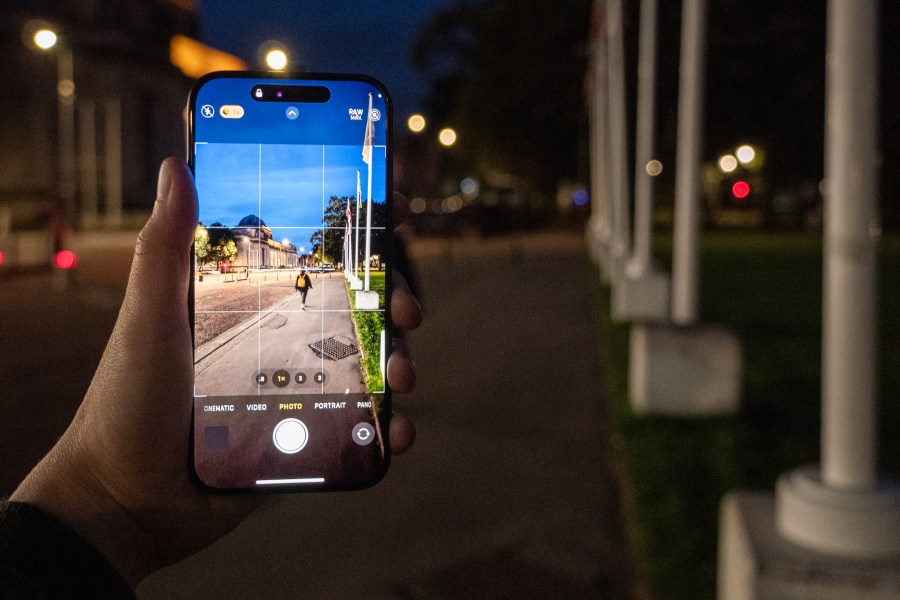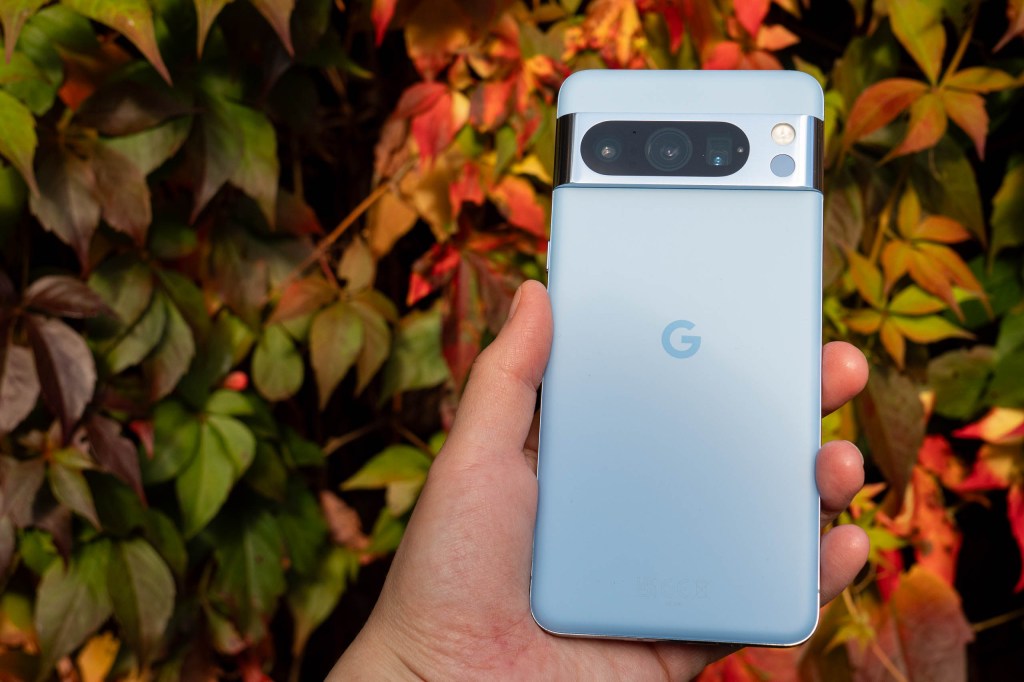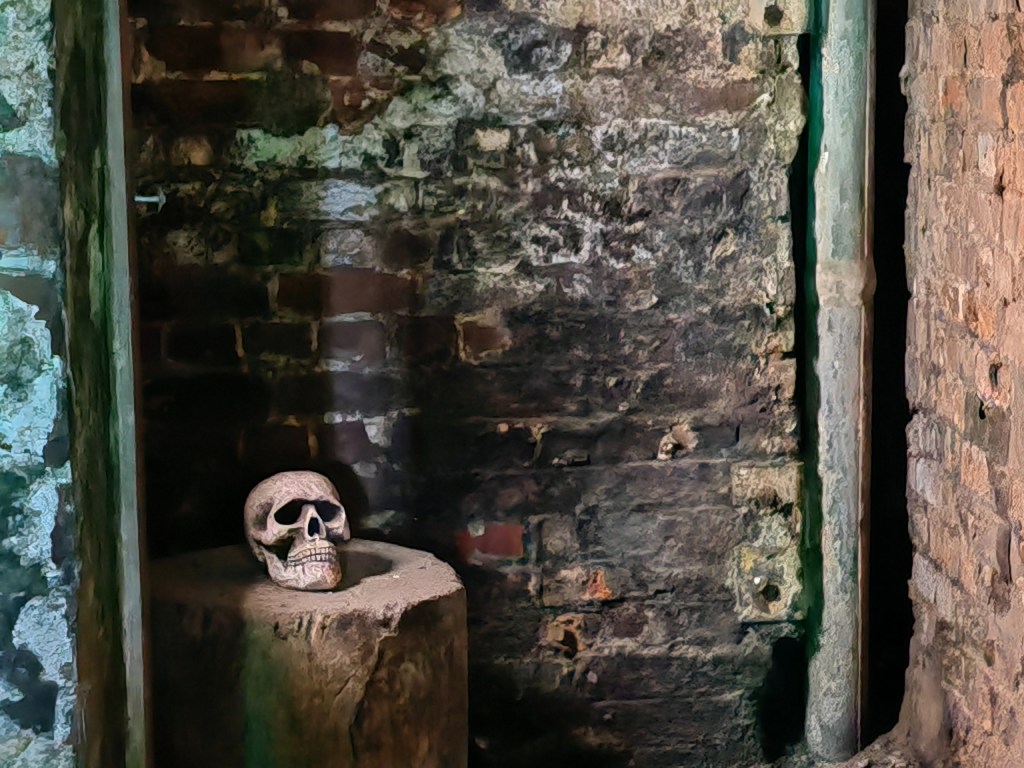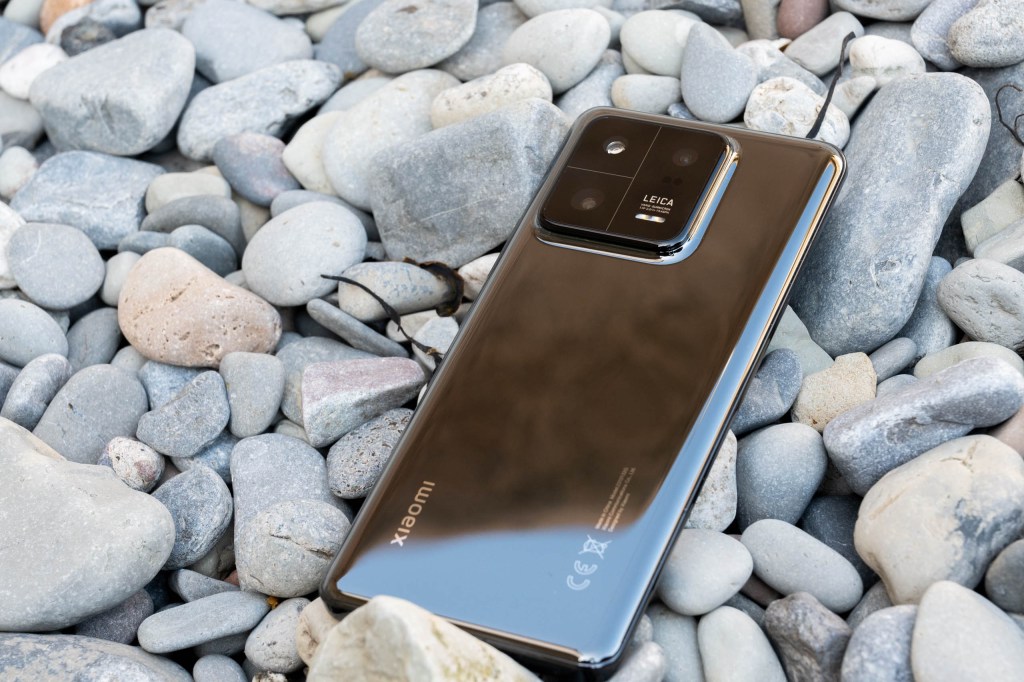The best smartphones for photography are also some of the best for low light. Small sensors have a hard time in the dark, yet many recent smartphones are equipped with powerful night modes that yield surprisingly decent results. It’s something that many smartphone manufacturers have highlighted in their marketing material, so there’s been a big drive from all the major producers to outdo each other in this field – great news for us.
Almost all of the current smartphones on the market have some kind of Night or Low Light mode, which often kicks in automatically when there’s not much light detected in the scene. In this guide, we’ve rounded up the phones that stood out during testing and offer the best performance in the dark. While great for low light, these devices also offer a solid all-around shooting experience, making them a good value for money.
Our list is a mix of newer and older phones, with options for various budgets. All the phones on this list are ones our team has tested and reviewed – we’re only recommending products with which we have hands-on experience. Read on for our full list, and scroll to the bottom of this page for an explainer on how low-light modes work in smartphones, with tips on how to get the best out of them.
Best smartphones for low light at a glance:
- iPhone 16 Pro Max – Buy Now
- iPhone 15 Pro Max – Buy Now
- Samsung Galaxy S25 Ultra – Buy Now
- Google Pixel 9 Pro – Buy Now
- Google Pixel 8 Pro – Buy Now
- Honor Magic 5 Pro – Buy Now
- Xiaomi 13 Pro – Buy Now
Why you can trust Amateur Photographer
We spend many hours testing every product we recommend, in detail, in a variety of situations and shooting scenarios, and only use experts for our reviews, so you can be sure that you’re getting the best products. Find out more about our expert writers.
Continue reading to find out how we tested the best smartphones for low light, and why we chose these models:
Apple iPhone 16 Pro Max

Amateur Photographer verdict
Its zoom capability and well-performing camera setup set it apart from the competition. The huge screen will appeal to landscape shooters- 5x zoom lens
- Pictures / videos look great on the huge screen
- Option to shoot in RAW
- New camera control button
- Maybe too large for some users
- High price, and fairly incremental upgrade from predecessor
- Low resolution telephoto camera
At a glance:
- 48MP wide camera, f/1.78 aperture, 24mm equivalent
- 48MP ultrawide camera, f/2.2 aperture, 13mm equivalent
- 12MP 5x telephoto, f/2.8 aperture, 120mm equivalent
- 6.9” Super Retina XDR OLED screen
- iOS 18
- Processor: A18 Pro Chip
- Price: $1299/£1199
The most recent iPhone flagship model, the iPhone 16 Pro Max, has a number of features which make it particularly useful for low light photography.
First off is the main sensor (1x lens, 24mm f/1.78 equivalent) which has a high 48MP resolution. By default, images are output at 24MP, a significant
boost from the 12MP standard output of most other smartphones. You can also shoot at the full 48MP resolution if you prefer.
That high-resolution sensor gives you some interesting options for shooting at ‘different’ focal lengths which make use of different areas of the sensor. So, not only can you shoot at the default 24mm, there’s also 28mm and 35mm options, as well as a 2x, 48mm equivalent. It’s also possible to shoot in Apple’s ‘ProRAW’ format, which gives you DNG files that you can work on in software either on your computer or on the phone itself.

An ultra-wide lens opens you up to 13mm equivalent, and while not quite as good a performer as the main lens, it’s great for capturing wide vistas and demonstrates plenty of detail. You can also shoot in raw format with this lens.
To round it out, there’s a 5x optical zoom lens, giving you a 120mm equivalent. Unlike its predecessor the iPhone 15 Pro and Pro Max where only the bigger Max version had the 5x zoom, both 16 Pro and Pro Max houses the same camera specs. If you would like to save a bit of cash – and if you’re happy with a 3x optical zoom, you can plump for the iPhone 15 Pro instead. You can save even more money by going for the ‘Non Pro’ iPhone 15 models, but you will lose the ability to shoot in raw format.
Perhaps the biggest downside of previous models were the lack of Pro mode, that being said,Apple finally fixed this by adding the new “Camera Control” button, which is designed to give you the experience of shooting with the iPhone as if it were a “real” camera”.
Read our iPhone 16 Pro Max Review.
iPhone 15 Pro Max
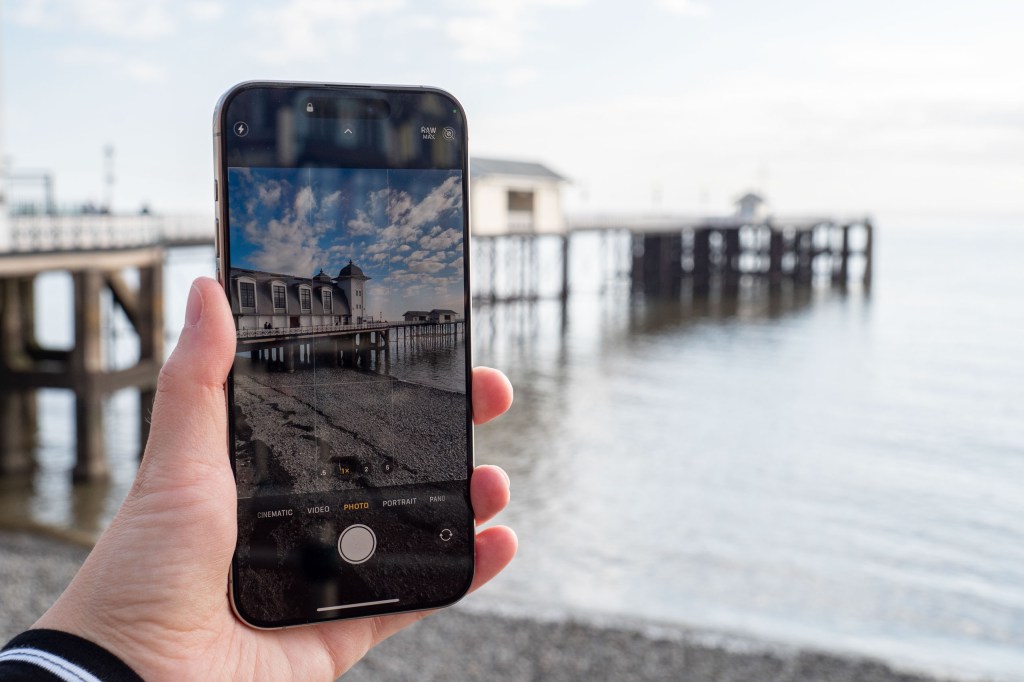
Amateur Photographer verdict
It’s an expensive option, and a minor upgrade from its predecessor, but if you want the best iPhone for low light this is unquestionably it. The 5x zoom is a welcome improvement.- Night mode can be used with Portrait mode
- All lenses work with Night mode
- Lovely big display
- Night mode can’t be activated manually
- Pricey proposition
At a glance:
- from $1,099 / £1,199
- apple.com
The latest flagship from Apple, the iPhone 15 Pro Max, has three lenses, which includes for the first time in iPhone a 5x optical zoom lens. With the main 1x (24mm f/1.8 equivalent) lens, you get 48 megapixels, with the default resolution being output at 24MP.
There is an automatic Night mode, which kicks in when the phone detects there’s not much light in the scene. This has the effect of reducing the default pixel count to 12MP if using the 1x lens, but you can switch it off if you want to keep resolution high – if there is some available light it does a job without the extra help. You can also shoot in raw format, but again, not if Night mode has been activated.
All of the lenses can be used in conjunction with Night mode, with the ultrawide angle putting in a very good job too. The 5x zoom is the furthest we’ve ever been able to shoot optically with an iPhone and is a noticeable improvement for those that want the extra reach compared to the older model.

If you don’t fancy the idea of the large size of the Pro Max, the iPhone 15 Pro is also pretty good – but here the zoom is restricted to 3x. If the high price puts you off, there’s also the option to go for the iPhone 15 (without the Pro moniker), which also has a well-performing Night mode, but you don’t get a zoom at all.
With the iPhone 15 Pro series you can blend Night and Portrait together, with some excellent results using the 1x lens – again there have been some notable improvements from the previous generation too.
Once Night mode has been activated, there is scope to increase the exposure time – this can be a good option if you’ve got a very steady hand or something to steady the phone with, especially if the scene you’re trying to photograph is very dark.
The downside with the iPhone 15 Pro series is that since Night mode is automatic, you can’t switch it on manually. This sometimes means that some darker scenes which have areas of light in them confuse the phone – but it’s quite rare for it to happen.
You might want to consider rolling back to the previous generation – the iPhone 14 Pro / iPhone 14 Pro Max – as you can pick up some good deals, comparatively speaking at least, especially if you look at the second-hand market.
Read our iPhone 15 Pro Max Review.
Samsung Galaxy S25 Ultra

Amateur Photographer verdict
With a new telephoto camera and AI-powered editing tools, the Samsung Galaxy S25 Ultra is the best Android phone for night-shooting, even with a few quirks in its handling and operation.- Night mode can be activated manually
- Clean results from main camera
- 3 high resolution sensors
- Expensive
- S Pen no longer works as remote release
At a glance:
- From $1299/£1249 for the 256GB option
- samsung.com
Samsung’s newest flagship is the best Android phone you can currently buy for night photography. It’s expensive, but its camera array now includes a 50MP f/1.9 ultrawide sensor, rather than the 12MP in the S24. There’s also a 50MP f/3.4 5x periscope telephoto and a 10MP f/2.4 3x telephoto camera and lets’ not forget the brightest 200MP f/1.7 stabilised main camera of course.
Night Modes are present and correct on this flagship phone. Unlike on the iPhone, this mode can be toggled when you want to use it, rather than just automatically activating when the phone thinks you should use it, which is immediately attractive. It produces clean and punchy results, and can also be used in conjunction with Portrait mode for night-time people pictures.
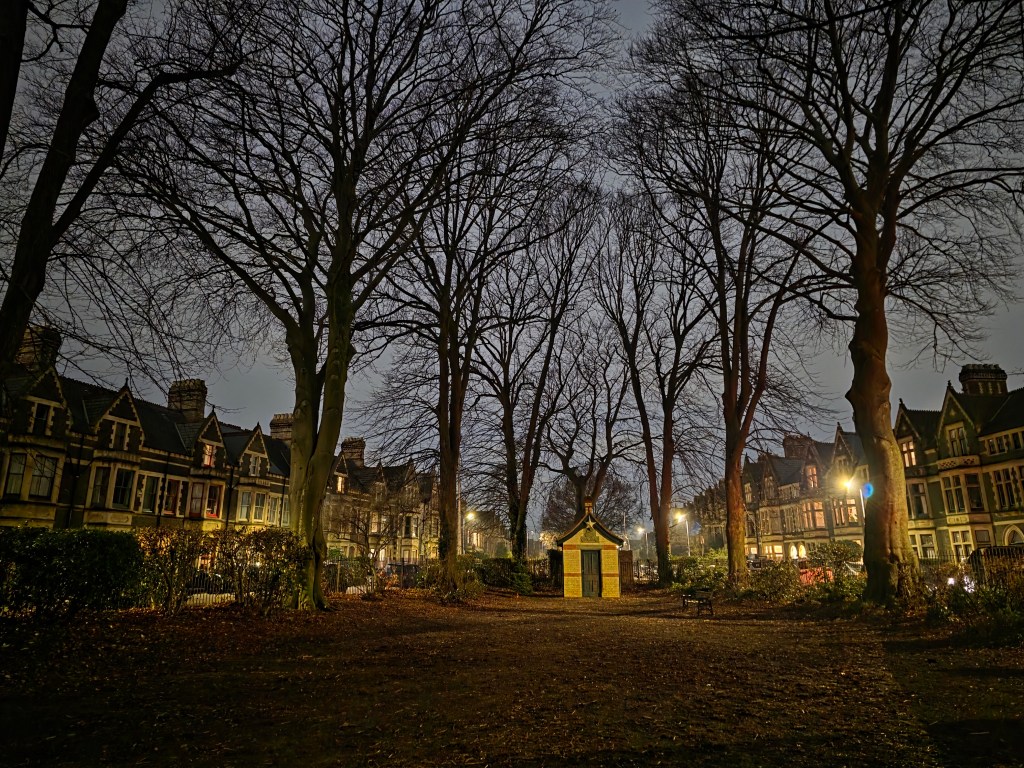
Of course, you can’t really talk about the Samsung Galaxy S25 Ultra without talking about AI. With the S24, Samsung declared that users are entering the “Era of AI” (the implied message being, “whether they want to or not”) and accordingly the S25 Ultra comes with a selection of AI-powered tools too, including AI Generative Fill, or a tool to move objects or people arond in a scene.
This is all powered by the “AI ProVisual engine”, which is designed to boost noise performance and colour production, both things that are helpful for night-time photography.
Overall, we found the Galaxy S25 Ultra to be very good in low-light with the best results obtained from the 200MP main lens, but the 50MP ultrawide lens also delivers a good performance and thanks to the higher resolution sensor it renders more details in the shadow areas than previous Galaxy phones.
All that said the S25 is not a huge update over the S24, so if it is too expensive for you, it’s worth considering the previous Samsung Galaxy S24 Ultra, especially given that you can use the S Pen as a remote shutter release, a feature that comes especially handy when shooting in low light and trying to stabilise your shot as much as you can. You might even want to look at the Samsung S23 Ultra. You can pick up solid bargains on both, especially if you are willing to shop second-hand.
Read our full Samsung Galaxy S25 Ultra review.
Google Pixel 9 Pro
Amateur Photographer verdict
A small flagship phone with great build quality and camera features that does a fantastic job in most situations.- Great image quality
- Improved selfie camera
- No camera punishment for choosing smaller screen
- AI features such as Add Me are great fun
- Average macro performance
- Expensive for additional storage options
- No true 8K video recording
Both Pixel 9 Pro and 9 Pro XL phones feature the same triple camera set-up, meaning that the image quality on both pro models is identical. The main difference between them is essentially their screen size. The bigger 6.8in display of the 9 Pro XL may come in handy when composing images or editing, however it is not a must for many, so if you prefer a smaller and more pocket-sized handset, opt for the 6.3in Pixel 9 Pro.
The company’s latest flagship brings a series of software updates to help you get great images in a range of shooting conditions. The updated HDR+ feature brings better colour handling and more true-to-life skin tones, improved exposure, sharpness, contrast and more. Fun shooting modes, which make use of AI technology, such as Long Exposure, even come in handy with nighttime street photography – for example, you could try shooting light trails.
There are some very useful editing functions too. For low-light photography, it’s also particularly impressive that all three of its cameras are high-resolution, which is often not the case with many smartphones.
The main sensor boasts 50MP, and a 25mm f/1.68 equivalent lens. This is joined by a 48MP ultra-wide camera and a 48MP 5x telephoto camera. You can shoot in raw format, there is also a Pro shooting mode in the native camera app, a welcome addition that we’ve already seen in the Pixel 8 Pro. Usefully, you can also shoot in the full 50MP resolution if you prefer, rather than the standard 12MP default output.
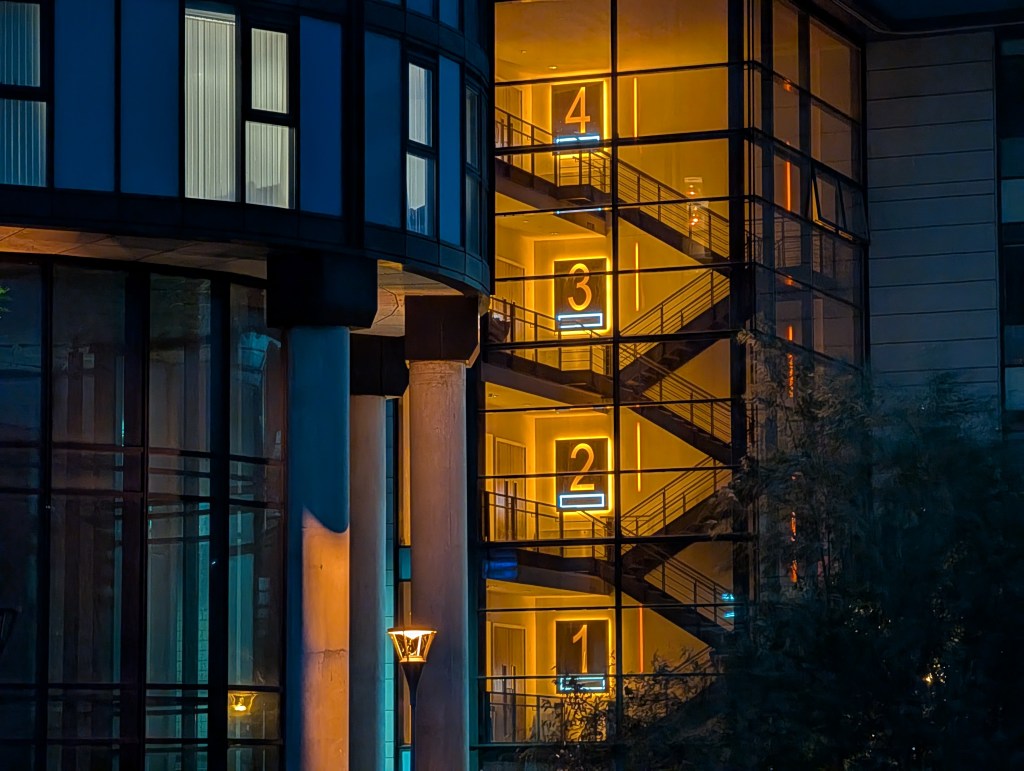
Excellent astrophotography shooting options are available if you want to shoot landscapes in very low light – which could be enough to tip the balance from another model to the Pixel if you like to head out after dark. Google also claims there have been improvements to low-light shooting in the Pixel 9 Pro, with some new functionality including Night-sight panoramic photos.
If you’re mainly interested in wide and ultra-wide lenses, you can opt for the cheaper Pixel 8 model, but you will lose some other features such as pro controls, as well as a telephoto lens.
Read our full review of the Google Pixel 9 Pro and Google Pixel 9Pro XL.
Google Pixel 8 Pro
Amateur Photographer verdict
Larger lens apertures meet clever AI-powered tricks in Google’s top-end flagship phone. Low-light results are consistently impressive, and it undercuts its rivals on price.- Impressive computational magic
- Large-aperture lenses
- Full control in Pro mode
- No 1TB option
At a glance:
- From $699 / £649
- store.google.com
We thought the Google Pixel 7 Pro was very good, but it just goes to show that there’s still plenty of improvements that can be made. The main sensor of the 8 Pro has 50MP, and is 1/1.31” – that’s the same as the Pixel 7 Pro, but the accompanying 25mm equivalent lens is now f/1.68.
It is joined by two 48 megapixel sensors. The ultrawide has an f/1.95 lens. This compares with last year’s 12MP, f2.2 lens. There’s also a 5x telephoto, which is similar in length to last year’s model (113mm for the new one, compared to 120mm for last year’s). It has the same size sensor, but the maximum aperture is now f/2.8, rather than f/3.5.

The wider aperture lenses are probably helping here, with the sensors able to gather more light. The Pixel 8 Pro also has a “Pro” mode, which gives you controls over things like shutter speed and white balance. There’s very little in the way of lens flare – which can sometimes be an issue with the 7 Pro – while in general, there’s much more detail on show from images from the 8 Pro. It also compares very well with other flagships like the iPhone 15 Pro Max and the Samsung Galaxy S23 Ultra.
Read our Google Pixel 8 Pro Review.
Honor Magic 5 Pro
Amateur Photographer verdict
An affordable phone with three 50MP cameras, the Honor Magic 5 Pro is a punchy number. The Night mode produces pretty good results, and can be supplanted with the Pro mode if preferred.- Three 50MP cameras
- Night mode can activate manually
- Affordable asking price
- Portrait mode doesn’t mix well with Night mode
At a glance:
- from £877
- hihonor.com
Here we’ve got another more reasonably priced flagship, which you can pick up for under £800 and get comparable performance to a Samsung or an iPhone.
You get three cameras/lenses, each boasting a high resolution of 50MP, pretty unusual in the smartphone world. There’s a 1x, an ultrawide and a 90mm equivalent telephoto lens, which is a good focal length – not being too short, or too long.
A Night mode can be manually chosen, but here again, you should find that it automatically switches on if light levels are low. You can use all of the lenses with Night mode, and you can also switch it off if it’s not quite producing the right results. Overall, low light images are pretty good – with the best results seen from the 1x and ultrawide lenses, but the 3.5x zoom doesn’t do too badly either – though this is because it generally uses a crop of the superior 1x crop thanks to all those extra pixels available.
Other useful modes for low light include a Pro mode, which you can use to set your own shutter speed – choosing a lengthy one while using a tripod is a good alternative to the dedicated Night mode. There’s a Portrait mode here, but it doesn’t mix with Night mode, so if you’re trying to photograph people in low light frequently, it might not be the best choice.
This is already on the cheap side, but if you want to save even more cash, then the Honor Magic 4 Pro can be picked up at an even lower price and also has a well-performing night mode. You can also find these on second-hand sites a bit more readily than the Magic 5 Pro.
Read our Honor Magic 5 Pro Review.
Xiaomi 13 Pro
Amateur Photographer verdict
With Leica-made lenses, Xiaomi’s phone delivers high-quality imagery – and its Night mode puts in a consistently good performance too, especially from the main camera.- Image quality is very good
- Night mode can use Leica ‘looks’
- Pro mode option
- Portrait and Night mode don’t mix
- Somewhat high price
At a glance:
- from $270 / £260 for 256GB
- mi.com
For this phone, Xiaomi has partnered up with Leica for the lenses, so there’s a good stamp of quality. This is another flagship which boasts three 50MP sensors – something which seems to set the “smaller” names apart from the bigger manufacturers like Apple and Samsung.
The main, 23mm equivalent camera also has a physically large sensor too – at one-inch, plus an f/1.9 aperture, which makes it well-equipped to deal with low light, even without using any special modes.
That said, there is a dedicated Night mode which kicks into action if low-light is detected, plus you can activate it manually too. An interesting aspect of the Xiaomi phone is that you can shoot in either “Leica Vibrant” or “Leica Natural” for a slightly different look – and that also applies to Night mode too. The results are very good, with that large 1x sensor putting in the best performance as we’d expect.
A very interesting Portrait mode also comes with this phone, which gives you the options to record using different “Leica” lenses – sadly it doesn’t combine with Night mode though, so it’s probably not the best choice for low-light portraiture.
Like many Android devices, there are other useful modes that you can employ too, such as a Pro mode, which gives you the option to use a slow shutter speed with a tripod. In this mode you can also shoot in raw format to give you better scope for editing too.
A great option for those who want flagship performance but can’t spend a fortune on a smartphone. The 13 Pro was initially marketed for $1000 / £1000, but prices came down quickly after the release of the Xiaomi 14T Pro, something we often see with Chinese models compared to Apple or Samsung, which tend to keep their value better.
Read our Xiaomi 13 Pro Review.
How does a smartphone’s night mode work?
While not every smartphone is exactly the same, the reason that most allow you to shoot night shots handheld is down to the way they operate in low light.
As a rule, they work by shooting several multiple frames at varying exposures, then merging them together (in-device) to create the impression that you’d shot it with a much longer exposure.
Using artificial intelligence to assess how much light is in the scene and how it thinks it should look, the results usually appear pretty quickly, and you might be surprised by just how much detail is reproduced.
Some smartphones have additional lowlight functions, such as Night Portraits (iPhone, Samsung, Pixel) – which blends together the night functionality with the portrait functionality for shallow depth of field effects. You might even find special functions such as Astro mode (Google Pixel) for shooting stars.
If you have a smartphone tripod – or another stable surface – you can sometimes get the phone to shoot even longer exposures for even better results, but generally, the fuss-free options are pretty good these days and don’t require too much tinkering with.
6 tips for shooting low-light with your smartphone
To get the most from your smartphone when shooting after dark, try these tips to boost your shots.
1. Use a tripod
You don’t need to lug around a big or heavy “camera” tripod, but a small smartphone tripod – or even a special case mount can enable longer shooting speeds and take your shots up a notch from the handheld results – such as being able to set a longer exposure. Place the phone on the floor or other stable surface for landscape and architecture shots and see how much extra detail can be pulled out.
2. Tap to change the exposure
If the light in a scene is mixed – say with very dark and very bright areas – it can confuse your smartphone. Tapping around the screen to meter from a different point can result in a better overall balance.
3. Turn on Night mode
If your phone allows you to manually switch on night mode, then it can be a good idea to take control yourself. This way you might also get access to further options that you can change too.
4. Shoot in raw if offered
Many smartphones now give you the ability to shoot in raw format. Try giving this a go so you can bring back some missing detail – you might find it’s not compatible with specific Night modes, or that you have to head into a special “Pro” mode.
5. Use the timer
Another way to help keep your smartphone shots sharp is to use the self-timer, if you’re using a tripod. This will ensure you don’t introduce any shake yourself when setting off the shutter.
6. Download editing apps
Not happy with the finished result? You can edit directly in most smartphones native apps, but it’s also worthwhile downloading more extensive editing apps too. Snapseed and Adobe Lightroom Mobile (which you’ll get for free if you have a Creative Cloud subscription) are particular favourites. Instagram also has some editing options too which are worth exploring.
Check out the best photography apps for phones.
See our smartphone reviews and find more tips for smartphone photography below:
- The best budget camera phones
- Black and white smartphone photography guide
- How to take portraits on a smartphone
Follow AP on Facebook, Twitter, Instagram, YouTube and TikTok.

